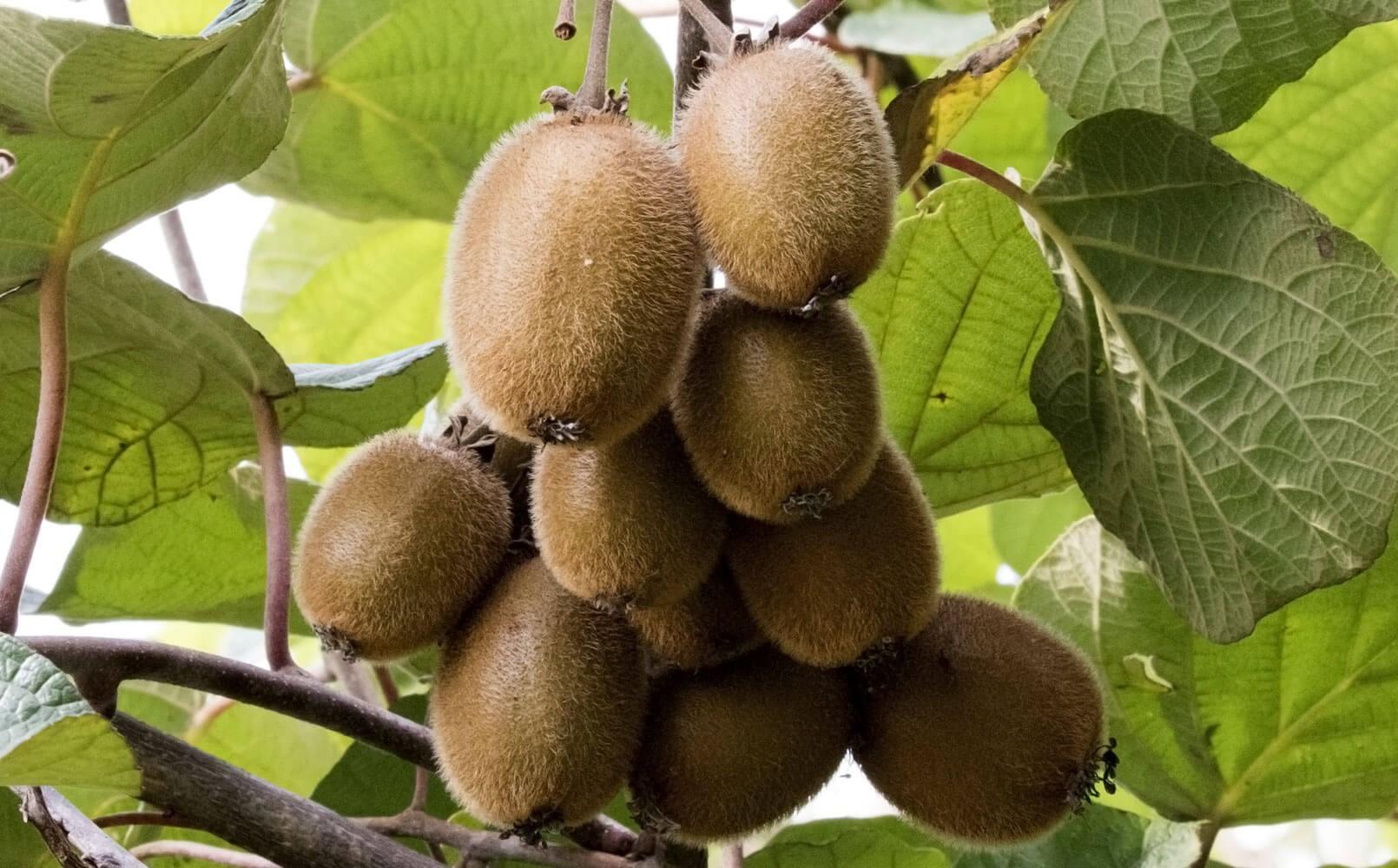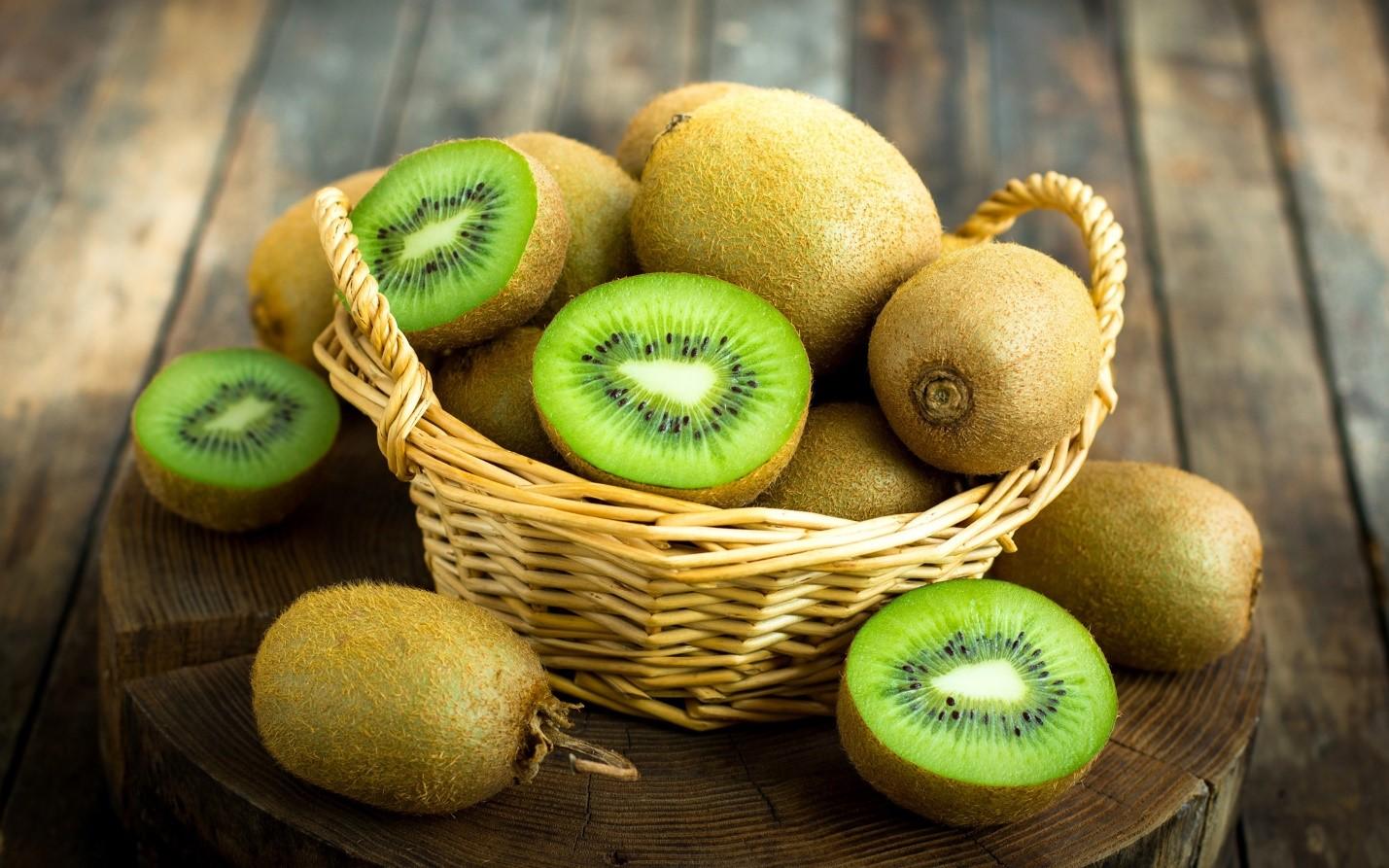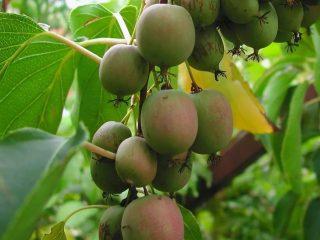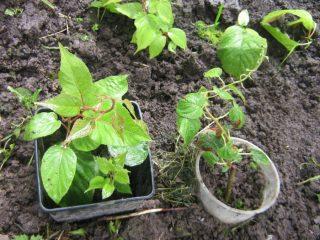Content
Actinidia is a genus with more than 70 species. The most prominent representative is the Chinese actinidia, the fruits of which are often called kiwi. The plant is a shrubby vine that grows in warm regions.
Description of Chinese actinidia

Chinese actinidia is resistant to pest attacks and diseases, rarely gets sick, but is susceptible to fungal infections
The liana grows up to 9 m in length, the shoots have bark reminiscent of wood. This is a deciduous variety. With the arrival of cold weather, the crop loses its green mass. The leaves are large, oval-shaped, hanging down. Due to their heaviness, the fruits also look towards the ground. They can be recognized by their red-brown color and small fluff. There are tiny fibers on the back of the leaves.
The fruits have a pleasant aroma, are green inside, and have a sweet and sour taste. They are stored for a long time and are quite soft to the touch. With one berry of Chinese actinidia, you can satisfy your daily requirement for vitamin C. The root system is well developed, protrudes from the ground, and spreads widely over the nearby area.
Chinese actinidia is bred for two purposes - for use in landscape design and for harvesting.The variety has beautiful green leaves that blend harmoniously with the fruits. During flowering, the vine looks very beautiful. For breeding, it requires high support (about 2.5 m). Designers use this feature by wrapping actinidia around gazebos, fences and trees. With its help they create a zoning effect.
Flowering occurs in late spring or early summer. The petals are white, turning beige over time. The flower exudes a scent identical to roses. Chinese actinidia is a heterosexual variety. It is possible to distinguish a male plant from a female one only during the flowering period. The former has many stamens visible, while the latter has a clearly visible pistil. Wind and insects help in pollination. If the Chinese actinidia is placed in a greenhouse, it must be pollinated by hand.

Chinese actinidia can be grown in the Moscow region, but you will need to build a greenhouse
As the name implies, the species is grown in China and the Far East. Young fruits can be distinguished by their reddish hue, which begins to darken with age. They ripen from the beginning of autumn. The period lasts about a month. There are many seeds inside.
Why is it called kiwi?
In everyday life, the plant is not called actinidia chinensis, but kiwi. The berry bears a striking resemblance to the bird of the same name. It is similar in size, color and, as gourmets say, taste.
Features of cultivation
Under natural conditions, Chinese actinidia grows in tropical forests. She prefers a humid climate and partial shade. When growing on your own plot, it is necessary to create similar conditions. Liana will not be able to grow in heavy soils: stones, clay, sand.The variety loves moist, acidified soil with little drainage. Weeds are pulled out regularly.
Chinese actinidia grows in warm countries. In Russia, growing the crop may be difficult as it cannot withstand temperatures below 12°C. A greenhouse is needed. For planting, you should choose the southern regions; the climate of the Caucasus is well suited. Placed on the east side.

Chinese actinidia berries contain a lot of vitamin C and B9
Select semi-closed areas so that the sun's rays do not affect the vine throughout the day. During its life, the Chinese actinidia will itself stretch to a favorable place. Roots do not have this opportunity; for them, ultraviolet radiation can be destructive.
The variety is propagated by grafting, seeds, seedlings or layering. Experts recommend using seedlings, as they take root faster. The disadvantage of this method is weak sexual dimorphism. The owner will not be able to understand for a long time whether it is a male or female plant. Therefore, it is easier to buy seedlings in a store to know about it in advance.
Roots love space, so you need to prepare a suitable area for them. Two-year-old Chinese actinidia are planted. With proper care, the variety grows quickly. The holes are dug at a distance of 2-3 m from each other. Volume – 60 cubic meters. cm. Drainage is added to the hole, the soil is enriched with turf, peat, river sand, manure and dry leaves in a ratio of 2:1:1:1:1. The store sells ready-made substrates intended for oriental crops.
The soil should not be dug up in advance; lime and ash, which reduce acidity, should not be added. If necessary, substances are applied in the form of a solution to the tree trunk area. The liana does not have good contact with the apple tree, so it is better to place it further away.To prevent the soil from losing moisture, the top layers are mulched with river sand or peat. Thanks to the treatment, the gardener will not need to dig up the soil around, which can lead to damage to the root system.

The fruits of Chinese actinidia cannot be processed; to ripen they are placed in a cool place
Actinidia chinensis requires high air humidity. Watering is carried out every other day. With the onset of darkness, the plant is irrigated.
In spring, the juice flows with greater activity, so at this time the Chinese variety is especially dangerous. Before flowering begins, the soil is thoroughly fertilized. If growth conditions are favorable, chemical additives are not required.
Harvesting and storage
At the beginning of the growing season, the fruits grow quickly. At the end of summer the pace slows down and recovers only by mid-autumn. Even if the fruits hang on the Chinese actinidia for a long time, they may not ripen. In this it is similar to tomatoes.
The berries are collected in mid-autumn (usually at the end of October) and placed in the cellar for ripening. Once they become soft, they can be eaten or sold. The taste qualities of ripe actinidia fruits are significantly superior to unripe ones. Stored in a cool place for a long time, until next spring.

Growing Chinese actinidia in Russia is not an easy task
The owner will have to properly equip the greenhouse, independently carry out pollination and spend a lot of water for irrigation
Benefits and Applications
The fruits of Chinese actinidia have a high concentration of vitamin C. It is enough to maintain the daily requirement. The berries are eaten, eaten fresh, and used in the confectionery industry. The fruits are made into jelly, used as an aperitif, made into jam, and added to salads.
Conclusion
Chinese actinidia is an amazing oriental variety. Its berries are constantly on store shelves. The plant cannot be called unpretentious, but for the effort spent the owner will receive juicy sweet and sour fruits, which will become the main source for maintaining immunity.
Reviews of Chinese actinidia








